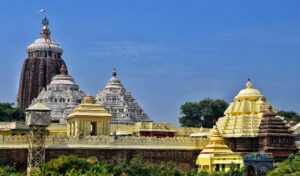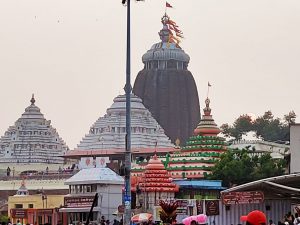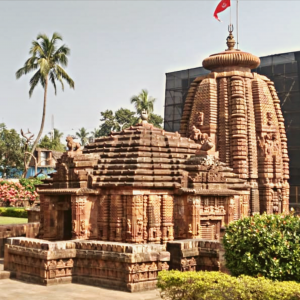Konark Sun Temple – A Complete Guide to Odisha’s Timeless Sun-Carved Wonder
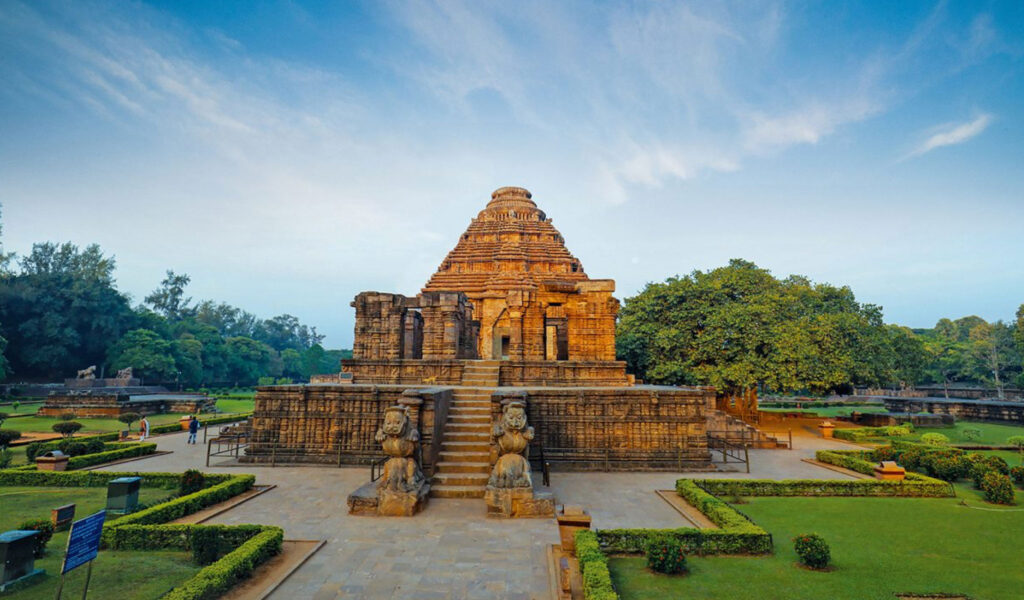
Perched on the windswept coast of Odisha, the Konark Sun Temple is perhaps one of India’s most evocative and iconic monuments. This 13th-century stone wonder stands as a grand, celestial chariot to the Sun God, its wheels and horses carved in stone, telling silent stories of devotion, art, and time. A visit here is a journey through mythology, craftsmanship, and nature’s light — it deserves a place on any traveler’s list of tourist attractions in Odisha. If you’re exploring tour places in Odisha, Konark is a jewel you cannot miss.
Where Is Konark Sun Temple? (with GPS Coordinates)
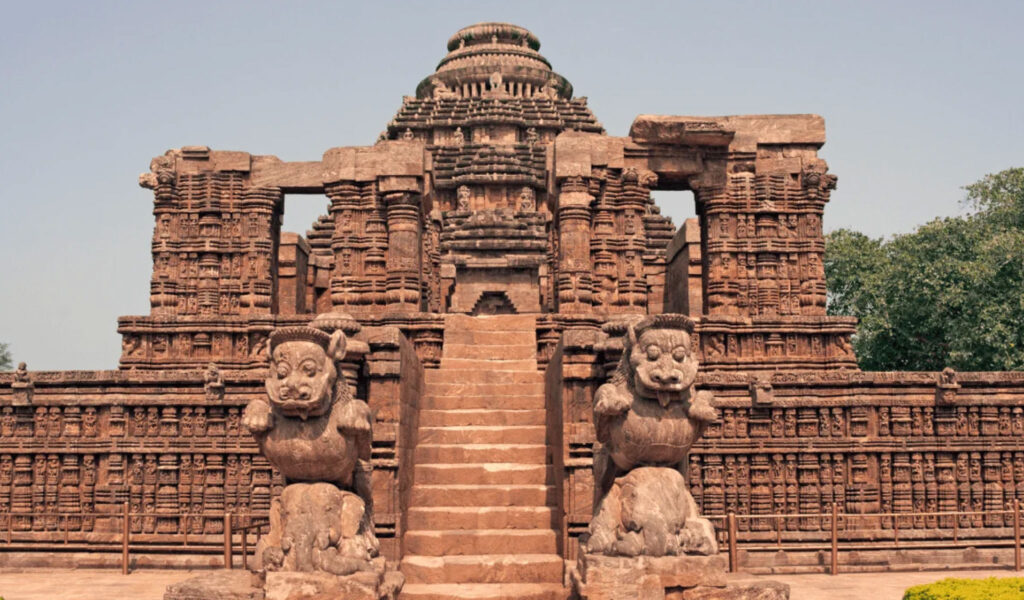
The Konark Sun Temple is located in the town of Konark, in the Puri district of Odisha, on India’s eastern coastline along the Bay of Bengal. It lies about 35 km northeast of Puri and 65 km southeast of Bhubaneswar.
GPS Coordinates: 19.8877° N, 86.0943° E
Konark is a small coastal town that functions as a hub for many places to visit in Odisha. The temple remains visible from various vantage points along the shoreline, and its proximity to Puri makes it an essential stop on the pilgrimage/heritage circuit of Odisha.
Mythological & Historical Significance
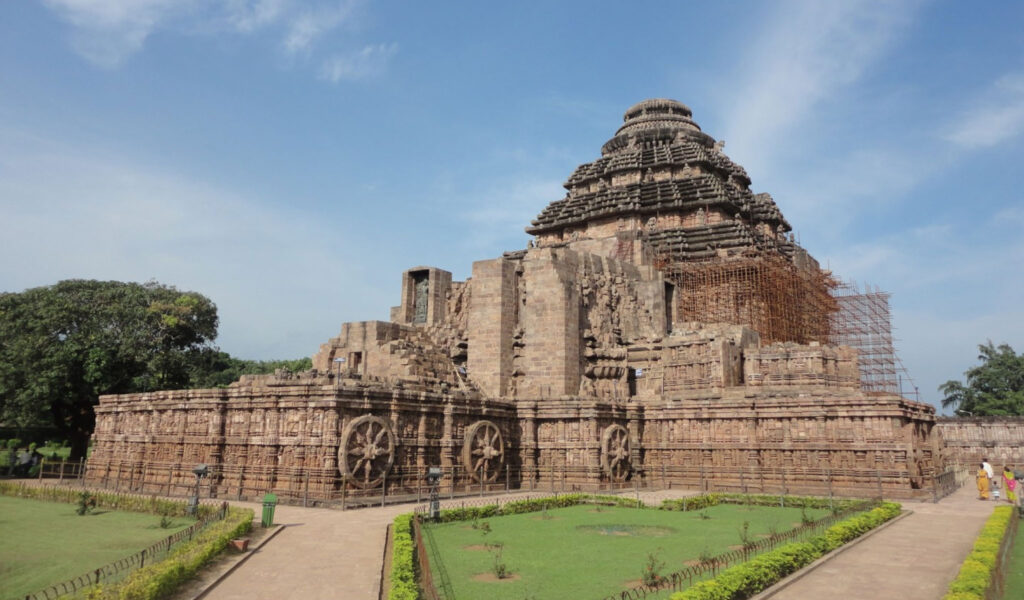
Legend and myth entwine deeply around Konark. According to Samba Purana, Samba (the son of Lord Krishna) was afflicted by leprosy and was cured by performing penance to Surya (the Sun God) near the Chandrabhaga river, which flows by Konark. In gratitude, Samba is said to have built a Sun shrine here.
Historically, the existing structure was commissioned in the 13th century by King Narasimhadeva I of the Eastern Ganga dynasty (reigned c. 1238-1264 CE). It is believed that the temple was built to celebrate the king’s victories and to assert divine sovereignty. Over subsequent centuries, it suffered damage from invasions, natural decay, and structural collapse; the main shikhara (tower) collapsed around the 19th century.
Architecture
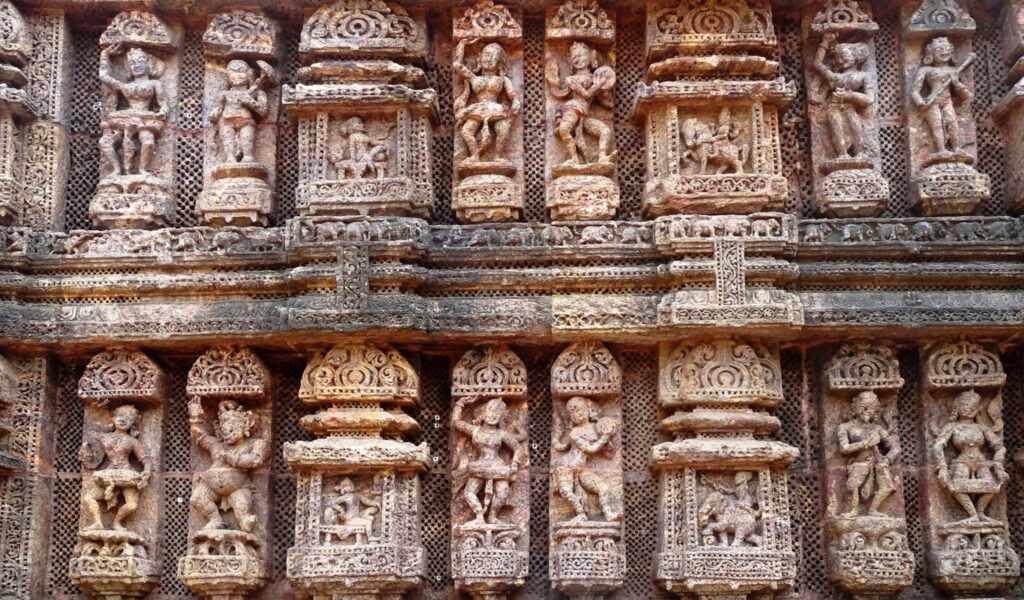
Architecturally, Konark is a standout example of Kalinga (Orissan) style of temple building. The temple complex is laid out along an east–west axis, with three principal components: the Vimana (sanctum tower), the Jagamohana (audience hall / porch), and the Natya Mandapa (dancing hall).
The structure is designed like a colossal chariot of the Sun, pulled by seven horses and mounted on 24 stone wheels (12 on each side). These wheels also double as sundials—some claim that the sun’s rays falling on the spokes can be used to tell time.
Walls and plinths are richly carved with mythological stories, dancers, musicians, animals, erotic symbolism (mithuna), scenes from daily life, and motifs of flora & fauna. The towering shikhara is lost, but the remaining fragments still convey the vision and scale of the original edifice.
A compelling local legend involves the chief architect Bishu Maharana and his son Dharmapada, who is said to have completed the temple’s crowning work overnight to save the craftsmen from execution by the king, then jumped to his death to preserve secrecy.
What You’ll See & Do at Konark Sun Temple
Walking through the temple grounds, you’ll first notice the massive stone wheels and the remains of the horses of the chariot. Each wheel is richly carved; many still retain fine detail of spokes and deities. The base itself is a sculpture gallery, with narrative reliefs and erotic scenes.
Inside the Jagamohana (audience hall) and Natya Mandapa you’ll see pillars carved with dancers in classical Odissi postures, musicians with instruments, and graceful divinities. The entrance faces the east so that the first light of dawn would strike the sanctum (though much of the original sanctum is lost).
A must-see experience is the light and sound show in the evening, which vividly narrates the temple’s history, legends, and artistry.
Stroll around the vast enclosure at leisure; the area allows vantage points to view the carvings from different angles. Watching sunrise or sunset adds dramatic light to the stone surfaces.
Beyond that, the nearby Chandrabhaga Beach is a relaxing spot to sit by the sea, listen to waves, or take a walk. Also, if you time your visit in December, the Konark Dance & Music Festival (1–5 December) held against the temple backdrop is a cultural highlight with classical dance performances and sand art events.
How to Reach Konark Sun Temple
By Air
The nearest major airport is Biju Patnaik International Airport (Bhubaneswar). From there, Konark is about 60–70 km by road.
By Train
Konark itself doesn’t have a major train station. The nearest railway station is Puri or Bhubaneswar, well connected from Delhi, Kolkata, Chennai, etc. From either, you take a road journey onward.
By Road
Konark lies on a well-connected road network. Regular buses and taxis ply from Bhubaneswar and Puri via the coastal road. The Odisha Tourism department lists Konark as wellconnected by road.
Many travelers combine Puri → Konark via the marine drive route, enjoying coastal vistas on the way.
If you book a guided day tour from Bhubaneswar, you can cover Konark and Puri in a single outing.
Konark is surrounded by several tour places in Odisha worth exploring:
•Chandrabhaga Beach (just 3 km east) — a tranquil shoreline, perfect for sunrise/sunset and beach walks.
•Puri & Jagannath Temple (~35 km away) — combine the divine with the solar in your Odisha tour.
•Raghurajpur — an artists’ village famed for Pattachitra painting and crafts (on the route between Puri and Konark).
•Sea Bird Island / Marine drive stretch — drive along coastal road for scenic views.
•Archaeological Museum, Konark — exhibits artefacts and sculptures removed from the temple complex.
•Ramachandi Beach, south of Konark along the coast, quiet and less crowded.
These nearby spots make Konark a nucleus for exploring tourist attractions in Odisha beyond just the temple.
Best Time to Visit & Travel Tips
The best time to visit Konark Sun Temple is October to March (winter and post-monsoon) when the weather is cool, skies are clear, and the coastal breeze is pleasant. Summer (April to June) can be scorching, while monsoon (July–September) brings heavy rain and slippery stones.
Travel Tips:
•Visit early morning or late afternoon to avoid harsh sunlight and crowds.
•Carry water, hat, sunscreen—stone surfaces reflect heat.
•Wear comfortable walking shoes (but inside some zones you may need to remove them).
•Book tickets in advance when possible; watch the queue lines, especially for the light & sound show (starts ~7:30 PM)
•Stay in nearby hotels to reduce travel time.
•Respect the heritage site—no graffiti, littering, or climbing the ruins.
•If visiting during December, catch the Konark Dance Festival.
Suggested Itinerary
Day 1: Arrive in Bhubaneswar → depart early for Konark → visit the Sun Temple complex (morning + light & sound show in evening) → stay overnight in Konark.
Day 2: Early beach walk at Chandrabhaga → drive to Puri via the marine drive → visit Jagannath Temple, Puri Beach → overnight in Puri.
Day 3: Day trip from Puri to Puri local attractions, or onward travel (e.g. Chilika Lake).
Alternatively, if your base is Bhubaneswar, you can do a half-day or full-day Konark + Puri combo tour. This itinerary blends heritage, spirituality, and coastal beauty, hitting major tourist spots in Odisha without rush.
FAQ – Konark Sun Temple
1) What are the opening hours?
From sunrise to sunset (approx. 6:00 AM–6:00 PM), as per ASI.
2) What’s the ticket price?
ASI pricing: ₹40 (Indians; ₹35 online), ₹600 (foreigners; ₹550 online). Children under 15: free.
3) Can I book tickets online?
Yes—through the ASI online portal (choose “Sun Temple, Konarak”).
4) When is the Light & Sound Show and how much is it?
Typically two evening shows around 6:30 PM & 7:30 PM (≈40 min). Some listings mention a 7:00 PM show (~₹30). Check locally on the day.
5) Is Konark a UNESCO World Heritage Site? Since when?
Yes—inscribed in 1984 (Criteria i/iii/vi).
6) Who built the temple and when?
Commissioned by King Narasimhadeva I (Eastern Ganga dynasty), 13th century (c. 1250 CE).
7) Why is the temple shaped like a chariot?
The complex represents Surya’s celestial chariot with 7 horses and 24 stone wheels (12 per side), emblematic of time and the solar cycle.
8) Can visitors enter all parts of the monument?
No. Some historic structures (e.g., the entrance hall filled with sand for stability in the early 20th c.) are not accessible for safety/preservation.
9) Are guides available on site?
Yes—licensed local guides are commonly available; you can also arrange via tour operators from Bhubaneswar/Puri.
10) Is photography allowed?
Photography is generally allowed in the open monument area—do not climb or touch carvings; follow on-site signage and ASI rules.
11) What’s the best time of day for photos?
Sunrise & late afternoon give dramatic light on carvings; evenings are great for the Light & Sound Show.
12) What else can I see nearby?
•Chandrabhaga Beach (~3 km; India’s first Blue Flag beach).
•Puri & Jagannath Temple (~35 km).
•Archaeological Museum, Konark (ASI sculpture gallery).
13) What’s special about Chandrabhaga Beach?
It became India (and Asia)’s first Blue Flag beach in 2018, signifying eco-friendly standards and clean amenities.
14) Is there a festival I shouldn’t miss?
Yes—the Konark Dance Festival (Dec 1–5) features top classical performances against the temple backdrop.
15) Any current conservation/restoration notes?
A project to remove sand and restore parts of the entrance hall was initiated in 2022; access remains controlled for safety.
Conclusion
The Konark Sun Temple stands as a testament to human devotion, visionary architecture, and timeless artistry. Even in its partial ruin, it commands awe, inspiring travelers to imagine how glorious it must have been in its prime. As one of the foremost tourist attractions in Odisha, it weaves together myth, history, and coastal ambience. For those planning tour places in Odisha, Konark is not just a detour, but a destination in itself. Whether you linger in carved shadows, listen to legends in the light & sound show, or sit watching the sea near Chandrabhaga, this temple rewards the soul and the eyes.
Recommended Tour
Related Blogs
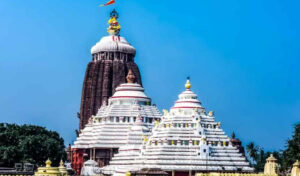
Jagannath Temple Puri – A Divine Journey Through One of the Most Sacred Tourist Attractions in Odisha
